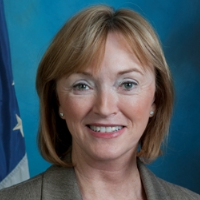Are Hospitals Using Emergency Rooms as an Added Revenue Opportunity?
 Marilyn Tavenner, acting administrator of the Cneters for Medicare and Medicais Services
Marilyn Tavenner, acting administrator of the Cneters for Medicare and Medicais Services
Due largely to medical billing decisions, hospitals have increasingly charged Medicare more for emergency room (ER) visits than ever before.
An investigation by The Center for Public Integrity found hospitals across the country added more than $1 billion to their Medicare invoices for ER visits from 2001 to 2008. The investigative website concluded that the rise in billing was a result of how administrators categorized the medical care provided to ER patients.
For example, out of the five possible billing codes, the Baylor Medical Center in Irving, Texas, charged Medicare for the two most expensive types of care in 80% of ER cases during 2008. This rate was almost twice the national average.
The Center for Public Integrity also found that the use of the top two most expensive ER codes nationwide nearly doubled, from 25% to 45% of all claims.
“In many cases, these claims were not for treating patients with life-threatening injuries,” the watchdog wrote. “Instead, the claims the Center analyzed included only patients who were sent home from the emergency room without being admitted to the hospital. Often, they were treated for seemingly minor injuries and complaints.”
The hospitals get away with what they are doing because it is mostly legal and because the Centers for Medicare and Medicaid Services, the federal body responsible for administering Medicare and Medicaid, actually provides little oversight of billing practices.
If the winners in this scheme are the hospitals, the losers are taxpayers, who foot the bill, as well as patients, who see their co-payments increased.
-Noel Brinkerhoff
To Learn More:
Hospitals Grab At Least $1 Billion In Extra Fees For Emergency Room Visits (by Joe Eaton and David Donald, Center for Public Integrity)
Overbilling by Doctors and Hospitals Costs Medicare a Billion Dollars a Year (by David Wallechinsky and Noel Brinkerhoff, AllGov)
- Top Stories
- Unusual News
- Where is the Money Going?
- Controversies
- U.S. and the World
- Appointments and Resignations
- Latest News
- Musk and Trump Fire Members of Congress
- Trump Calls for Violent Street Demonstrations Against Himself
- Trump Changes Name of Republican Party
- The 2024 Election By the Numbers
- Bashar al-Assad—The Fall of a Rabid AntiSemite






Comments